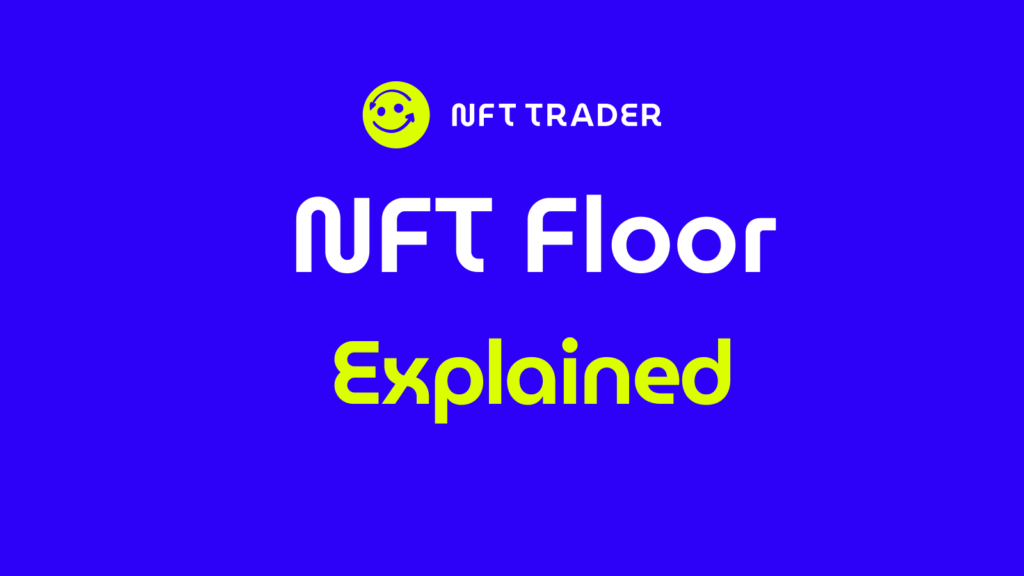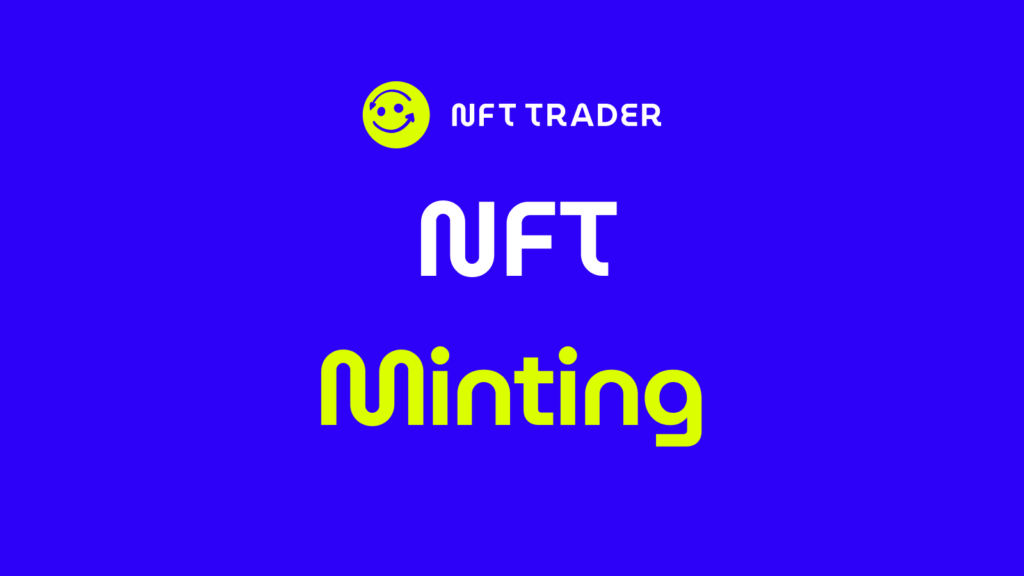What is an NFT and how does it work? A comprehensive guide
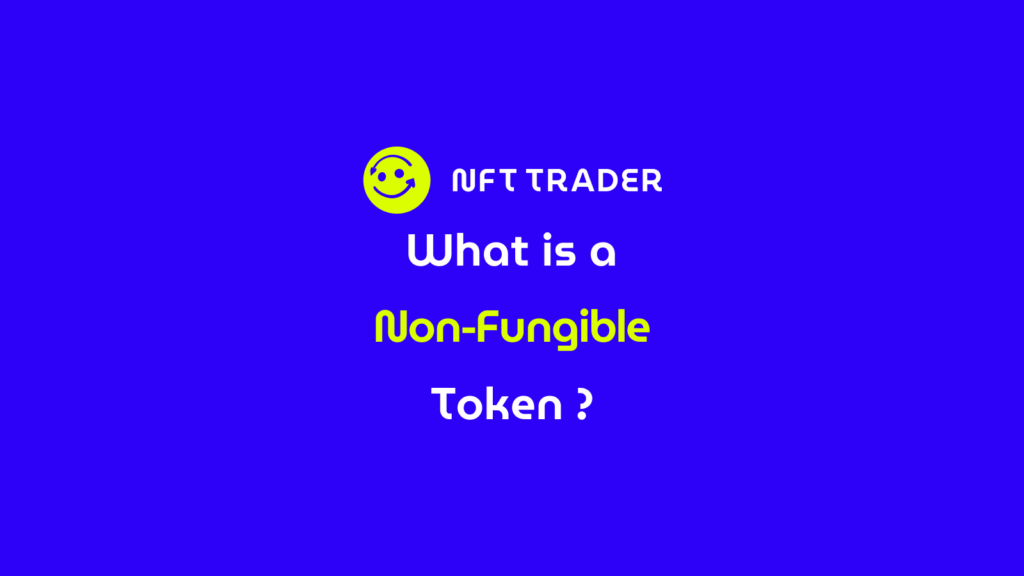
NFTs, or Non-Fungible Tokens, are unique digital assets that have gained immense popularity across various industries. Unlike traditional cryptocurrencies like Bitcoin, NFTs represent ownership of a specific item or piece of content on a blockchain, making each token one-of-a-kind and irreplaceable. This uniqueness has sparked a revolution in the digital world, allowing creators to tokenize their digital art, music, collectibles, and even virtual real estate, and enabling users to buy, sell, and trade these assets securely and transparently on blockchain marketplaces.
The popularity of NFTs stems from their ability to solve long-standing challenges in the digital realm. They establish verifiable ownership and authenticity, preventing duplication and plagiarism, while also empowering creators to monetize their work directly without intermediaries. NFTs have impacted various domains, including art and gaming, where they’ve given rise to new economies and increased engagement among users. Moreover, NFTs have enabled the establishment of digital collectibles and provided a solution for protecting intellectual property rights. With the decentralized nature of blockchain, NFTs have fostered trust and security among users. As this technology continues to evolve, NFTs are poised to reshape the digital landscape, offering exciting possibilities for both creators and enthusiasts in the years to come.
Summary:
- What is an NFT?
- How do NFTs Work?
- Use Cases of NFTs in different fields
- What is an NFT collection?
- Pros and Cons of NFTs
- The Future of NFTs
- Final Thoughts
What is an NFT?
NFT stands for Non-Fungible Token. In the context of blockchain and digital assets, an NFT is a unique and indivisible digital asset that represents ownership of a specific item, artwork, or content. NFTs are built on blockchain technology, most commonly on platforms like Ethereum, which ensures transparency, security, and immutability of ownership records.
The uniqueness of NFTs sets them apart from other digital assets like cryptocurrencies, such as Bitcoin or Ethereum. Cryptocurrencies are fungible, meaning they can be exchanged on a one-to-one basis and have the same value. For instance, one Bitcoin is equal to another Bitcoin, and they can be freely exchanged. In contrast, NFTs are non-fungible, and each token is distinct from others. Each NFT has its own distinct value and cannot be exchanged on a like-for-like basis. Each NFT carries metadata, which defines its specific attributes, characteristics, and ownership details, making it one-of-a-kind in the digital space.
The term “fungible” refers to the interchangeability and equal value of assets. In the context of NFTs, this means that each token is unique and cannot be replaced with another token of equal value. For example, if you own an NFT representing a specific piece of digital art, it is unique to that specific artwork, and you cannot swap it for another NFT representing a different artwork, as each token carries its own distinct value.
NFT metadata is a crucial aspect of these tokens. It refers to the additional information and attributes attached to an NFT, stored as part of its token data on the blockchain. This metadata includes details about the digital asset represented by the NFT, such as the creator’s information, title, description, and other relevant characteristics that define its uniqueness. Metadata is essential for verifying the authenticity and provenance of the digital asset, helping to ensure that the NFT represents the genuine work of the creator.
The NFT contract address is a unique identifier associated with the smart contract that governs the creation, transfer, and ownership of a specific collection or set of NFTs. Smart contracts are self-executing contracts with predefined rules encoded on the blockchain. These contracts include the logic that determines how the NFTs within the collection function, including aspects like royalty distribution, copyright terms, and the ability to mint or burn tokens. The contract address allows users to interact with and verify the authenticity of NFTs within that particular collection on the blockchain.
In summary, NFTs are unique and indivisible digital assets built on blockchain technology, representing ownership of specific items, artworks, or content. They differ from cryptocurrencies in that they are non-fungible, meaning each token is distinct and cannot be exchanged on a like-for-like basis. NFTs carry metadata, providing essential information about the digital asset they represent. The NFT contract address is a unique identifier associated with the smart contract governing the NFT collection, dictating how the tokens function and interact on the blockchain.
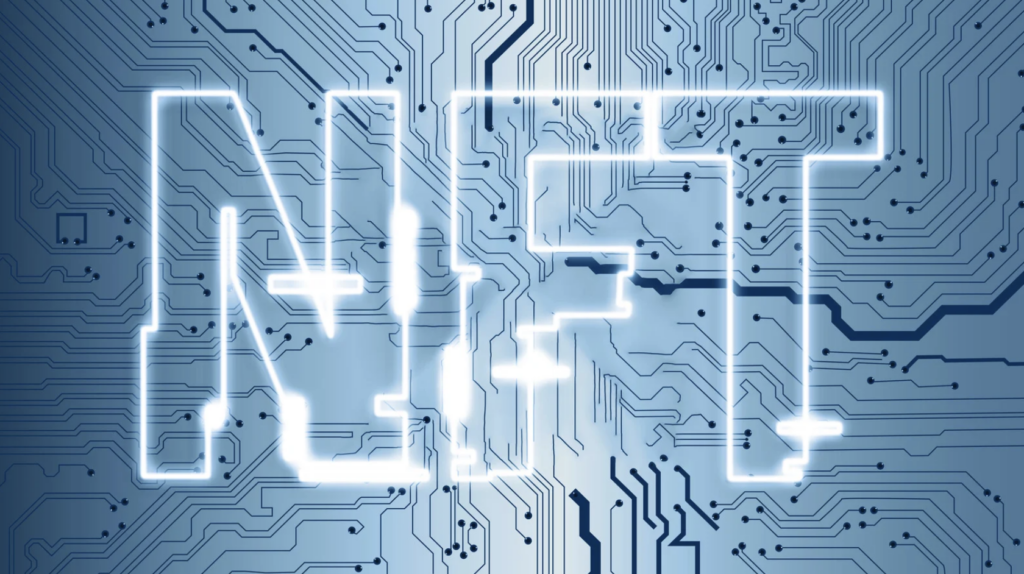
How Do NFTs Work?
Imagine you have a rare, one-of-a-kind baseball card that you want to prove is genuine and unique. You decide to turn it into a digital version, but you’re worried that digital copies can be easily duplicated and lose their value. That’s where NFTs come to the rescue!
NFTs, or Non-Fungible Tokens, are like digital certificates of authenticity that live on a blockchain. A blockchain is a decentralized and transparent digital ledger, kind of like an unalterable digital record book that everyone can see. Each NFT contains a unique set of data that verifies the ownership and attributes of the digital item it represents, whether it’s a digital artwork, a music track, a virtual real estate, or even a tweet.
Here’s how it works: When an artist or creator decides to tokenize their digital creation, they ‘mint’ an NFT. Minting is like creating a brand-new token that links to their work. This NFT is now stamped with a unique identifier, making it impossible to replicate or interchange with any other token. It’s like giving your baseball card a digital DNA! This uniqueness is the core value of NFTs.
Once minted, the NFT is recorded on the blockchain, providing an unalterable proof of its existence, origin, and ownership. This decentralized system ensures that no single entity can manipulate the information, making it secure and trustworthy. And here’s the kicker: when you buy an NFT, you’re not purchasing the actual artwork or digital item; you’re buying the ownership rights to that unique token on the blockchain. It’s similar to owning the original baseball card rather than a print or a copy.
Now, you might wonder, “But what’s stopping people from screenshotting or copying the digital artwork?” Well, while anyone can copy the image, the real value lies in owning the official NFT. Think of it as having a limited-edition autographed poster versus a mass-produced print. The former holds more value and authenticity, and it’s the same with NFTs.
Since NFTs are digital, they can be easily traded on various online marketplaces. Each time an NFT is sold or transferred, the blockchain records the transaction, keeping a clear and transparent history of ownership changes. This helps establish provenance and ensures that artists receive royalties each time their NFT is resold, thanks to a feature called “smart contracts” that automatically execute these payments.
NFTs have brought about a revolutionary shift in the digital world, empowering creators to protect their work and earn fair compensation. It’s like a new era of digital ownership, where uniqueness is the new gold standard. Whether you’re a blockchain novice or a seasoned cryptocurrency enthusiast, NFTs open up a world of possibilities for artists, collectors, and fans alike, creating a vibrant and decentralized ecosystem for the digital age.
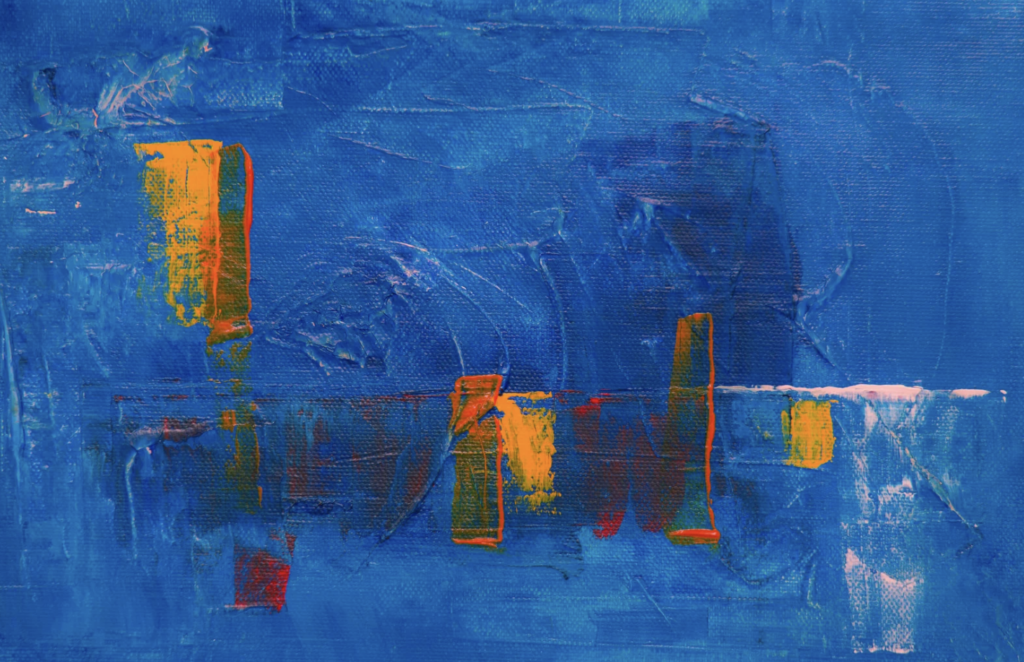
Use Cases Of NFTs In Different Fields
NFTs in Art & Music
NFTs, or Non-Fungible Tokens, have found diverse and exciting applications across various industries. In the art world, NFTs have revolutionized digital ownership, allowing artists to tokenize their artworks and sell them directly to collectors. In gaming, NFTs enable players to own unique in-game assets, characters, and virtual real estate, fostering a thriving economy within virtual worlds. Additionally, NFTs have brought transparency and provenance to the world of collectibles, offering a secure way to authenticate and trade digital memorabilia. Moreover, NFTs have been used in the music industry to tokenize albums and songs, granting artists greater control over their creations and revenue streams. With their ability to establish verifiable ownership and authenticity, NFTs continue to reshape industries and offer innovative opportunities for creators and enthusiasts alike.
- Music: NFTs have revolutionized the music industry by offering artists a new way to monetize their work and engage with their fans. Musicians can tokenize their music albums, songs, or even individual tracks as NFTs, giving each piece a unique digital identity on the blockchain. This digital certificate of ownership ensures that fans can confidently own the original and official version of a piece of music, even though copies may exist on various platforms. With NFTs, artists can sell their music directly to their audience, cutting out intermediaries like record labels and distributors. Additionally, NFTs can incorporate smart contracts, automatically directing a percentage of the revenue to the artists whenever their music is resold in secondary markets. This newfound financial empowerment and direct connection with fans have sparked excitement in the music community, as musicians explore innovative ways to leverage NFTs for exclusive releases, virtual concerts, and unique fan experiences.
- Art: In the art world, NFTs have brought about a transformative shift in the way digital artworks are owned and valued. Artists can now tokenize their digital creations, such as paintings, illustrations, and digital art pieces, as NFTs on various blockchain platforms. Each NFT represents a verifiable proof of authenticity and provenance, providing collectors with the assurance that they own the original and official version of the artwork. This solves the long-standing challenge of digital art duplication and forgery. With NFTs, artists have new avenues to monetize their digital art, as collectors compete to own these exclusive and scarce tokens. The blockchain’s transparent nature also ensures a clear record of art transactions, making it easier to track an artwork’s history and value over time. As the art world embraces NFTs, it fosters a more inclusive and accessible art market, allowing artists from diverse backgrounds to showcase their talent and find new audiences worldwide.
- Cross-Collaborations: An exciting aspect of NFTs in both music and art is the potential for cross-collaborations between artists and musicians. Musicians can join forces with digital artists to create unique and immersive NFT experiences for their fans. For example, musicians can release exclusive NFT music albums paired with digital artworks, offering a multi-dimensional and collectible experience to their audience. These NFT collaborations enable artists to explore new creative expressions while providing fans with an interactive and personalized way to connect with their favorite musicians. The convergence of music and art in the NFT space has opened doors for groundbreaking collaborations, pushing the boundaries of both industries and redefining how digital creativity is consumed and appreciated.
In summary, NFTs have had a profound impact on the music and art industries, empowering artists to monetize their work directly and connect with their fans in innovative ways. In music, NFTs enable musicians to tokenize their music and offer exclusive experiences, while in art, NFTs provide a secure and transparent way to establish ownership and value for digital artworks. Cross-collaborations between musicians and artists create exciting opportunities for multi-dimensional experiences for fans. As NFT technology continues to evolve, its influence on music and art is likely to grow, shaping the future of creativity and ownership in the digital era.

NFTs in Gaming and Virtual Reality
- Gaming: NFTs have sparked a gaming revolution by introducing true ownership and value to in-game assets. Gamers can now own and trade unique in-game items, characters, skins, and other digital assets as NFTs on blockchain platforms. This means that each NFT is one-of-a-kind and cannot be replicated or destroyed, providing players with a sense of exclusivity and rarity. NFTs have turned virtual items into tangible assets that can be bought, sold, and traded in online marketplaces, creating a thriving virtual economy. Gamers can earn real-world value for their time and skill investment, as valuable in-game items can be sold to other players for cryptocurrencies or fiat money. Additionally, NFTs enhance player engagement, as they become more invested in the games they play, knowing that their virtual possessions have real-world value.
- Virtual Reality (VR): NFTs are making a significant impact on the virtual reality landscape, unlocking new possibilities for virtual worlds and social experiences. With NFTs, virtual real estate and land can be tokenized, allowing users to buy, own, and develop digital properties on virtual reality platforms. This creates a virtual real estate market, where users can invest in unique locations and build virtual businesses, art galleries, or social hubs. NFTs also enable the creation and ownership of virtual art and digital installations, adding value and scarcity to the virtual art scene. Virtual reality platforms are embracing NFTs to empower users with creative freedom, ownership, and opportunities for monetization.
- Cross-Platform Interoperability: One of the exciting aspects of NFTs in gaming and virtual reality is the potential for cross-platform interoperability. NFTs can be designed to work across multiple virtual worlds and gaming platforms, allowing users to carry their in-game assets and virtual properties from one game to another. This opens up a world of possibilities for users to engage in diverse experiences without losing the value of their investments. Additionally, virtual reality experiences can become more interconnected, as users can showcase their NFT art collections or unique virtual real estate across different virtual reality platforms. This seamless interoperability enhances user experiences, fosters creativity, and strengthens the bond between players and their virtual assets.
In conclusion, NFTs have transformed gaming and virtual reality by introducing true ownership, value, and creativity to virtual worlds. In gaming, NFTs have turned in-game assets into tangible and tradeable items, creating a thriving virtual economy that rewards players for their time and skills. In virtual reality, NFTs have enabled the tokenization of virtual real estate and art, empowering users with creative freedom and opportunities for monetization. The cross-platform interoperability of NFTs enhances user experiences and strengthens connections between virtual reality platforms. As NFT technology continues to evolve, its impact on gaming and virtual reality is likely to shape the future of immersive digital experiences.

Other Use Cases
NFTs have found various other use cases across different fields. Here are some additional examples:
- Collectibles and Memorabilia: NFTs have breathed new life into the world of collectibles and memorabilia. Collectors can own unique digital collectibles, such as trading cards, limited-edition merchandise, and historical artifacts, as NFTs on the blockchain. These digital collectibles carry provenance and scarcity, making them valuable and sought after by enthusiasts and collectors.
- Fashion and Luxury Goods: NFTs are making waves in the fashion and luxury goods industries. Fashion designers can tokenize limited-edition clothing lines or virtual fashion items as NFTs, offering exclusive ownership and access to virtual fashion shows. Luxury brands can also use NFTs to authenticate and track the origin and ownership of high-value products, such as luxury handbags and watches, ensuring transparency and combating counterfeits.
- Intellectual Property and Copyright: NFTs have implications beyond art and music, offering a solution for protecting intellectual property rights. Content creators, authors, and filmmakers can tokenize their digital creations, books, scripts, and movies, ensuring verifiable ownership and royalties for each use or sale.
- Virtual Events and Experiences: NFTs have opened up possibilities for virtual events and experiences. Organizers can issue NFT tickets for virtual concerts, conferences, and exhibitions, granting access to exclusive content and virtual meet-and-greets with artists and speakers.
- Decentralized Finance (DeFi): In the realm of decentralized finance, NFTs have been integrated into financial products and services. NFTs can represent ownership of tokenized assets in DeFi protocols, such as real estate properties or investment funds, allowing users to trade and access liquidity in a decentralized manner.
- Education and Certification: NFTs are being explored for educational purposes, as they can represent certifications, degrees, and achievements. Educational institutions can issue NFTs to students, providing them with secure and verifiable digital credentials.
- Virtual Identity and Avatars: NFTs enable the creation and ownership of virtual identities and avatars. Users can customize their virtual personas and own unique digital avatars that they can use across various virtual reality and gaming platforms.
- Environmental Conservation: NFTs have been utilized to raise funds for environmental conservation efforts. Artists and organizations can create NFTs with nature-themed art and donate a portion of the proceeds to conservation projects.
These diverse use cases demonstrate the versatility and potential of NFTs to reshape various industries and aspects of our digital lives. As blockchain technology continues to evolve, we can expect NFTs to find even more innovative applications across a wide range of fields.
What Is An NFT Collection?
An NFT collection refers to a group of Non-Fungible Tokens that share a common theme, style, or ownership. In the context of NFTs, “collection” is used to categorize and organize a set of unique digital assets that are part of a specific series or group. These collections are often created by individual artists, companies, or communities and are typically showcased on NFT marketplaces or platforms.
For example, an artist might create a series of digital artworks, each represented as an NFT, and label them as part of their “Abstract Art Collection.” Each artwork within the collection is unique and cannot be replaced or interchanged with other tokens, representing a distinct piece of digital art. Collectors interested in the artist’s work can browse through the “Abstract Art Collection” to view and purchase individual NFTs that belong to this series.
NFT collections can also be tied to specific projects, games, or virtual worlds. For instance, a blockchain-based game might have a collection of unique in-game characters or items, each represented as an NFT. Players can collect these tokens to enhance their gaming experience or trade them with other players.
In summary, an NFT collection is a set of unique digital assets, each represented as a Non-Fungible Token, that are grouped together based on a common theme, creator, or project. These collections offer a way to organize, showcase, and trade NFTs within the growing ecosystem of blockchain-based digital assets.
Pros & Cons Of NFTs
NFTs (Non-Fungible Tokens) offer several advantages that have contributed to their widespread adoption and popularity.
Here are some of the key advantages
- Ownership and Authenticity: NFTs provide a secure and verifiable way to establish ownership and authenticity of digital assets. Each NFT is unique and has a distinct identity on the blockchain, ensuring that the owner possesses the original and official version of the asset. This is particularly valuable in digital art, where NFTs have solved the problem of art duplication and provenance.
- Direct Creator-to-Consumer Interaction: NFTs enable direct interactions between creators and consumers, cutting out intermediaries like galleries, record labels, or publishers. Artists, musicians, and content creators can tokenize their work and sell it directly to their audience, fostering a closer and more rewarding relationship with their fans.
- Monetization and Royalties: NFTs empower creators with new opportunities for monetization. Through smart contracts, artists can receive royalties each time their NFTs are resold in secondary markets, ensuring ongoing revenue from their creations even after the initial sale. This royalty feature is a significant advancement for artists and content creators, providing them with more sustainable income streams.
- Scarcity and Value: NFTs introduce scarcity to the digital world, where digital items were once easily copied and distributed. By tokenizing digital assets as NFTs, creators can limit the number of editions or unique versions, making each token more valuable and desirable for collectors.
- Decentralization and Transparency: NFTs are built on blockchain technology, which operates in a decentralized and transparent manner. This means that ownership records and transaction histories are publicly available and cannot be altered or controlled by any single entity. The decentralized nature of NFTs ensures trust and security for both creators and buyers.
- Interoperability and Cross-Platform Use: NFTs can be designed to work across multiple platforms and virtual worlds, allowing users to carry their virtual assets and identities across different ecosystems. This interoperability enhances user experiences and creates a more interconnected digital environment.
- Innovation and Creativity: NFTs have opened up new avenues for creativity and innovation.
They have been integrated into various industries, from art and gaming to fashion and education, unlocking novel and imaginative applications of blockchain technology.
In conclusion, NFTs offer a range of advantages, such as establishing ownership and authenticity, enabling direct creator-to-consumer interactions, providing monetization opportunities with royalties, introducing scarcity and value to digital assets, ensuring decentralization and transparency, promoting interoperability, and fostering creativity and innovation. These advantages have reshaped the digital landscape and are transforming various industries, empowering creators and consumers alike in the digital age.
While NFTs (Non-Fungible Tokens) offer several advantages, they also come with certain disadvantages and risks.
Here are some of the key disadvantages
- Lack of Regulation: The NFT market is relatively new and lacks comprehensive regulation, making it vulnerable to scams, fraud, and unethical practices. This lack of oversight may lead to instances of fake or misleading NFTs being sold, resulting in financial losses for unsuspecting buyers.
- High Environmental Impact: The process of creating and trading NFTs on some blockchain networks, particularly those that use proof-of-work consensus mechanisms, consumes significant amounts of energy. This has raised concerns about the environmental impact of NFTs and their carbon footprint.
- Volatility and Speculation: Like other digital assets and cryptocurrencies, the value of NFTs can be highly volatile and subject to speculative trading. Prices may fluctuate dramatically, leading to potential financial risks for investors and collectors.
- Copyright and Intellectual Property Concerns: While NFTs offer ways to prove ownership of digital assets, they may not always address issues related to copyright infringement or intellectual property violations. Unauthorized use of copyrighted material in NFTs could result in legal disputes for both creators and buyers.
- Market Saturation and Overcrowding: The rapid growth of the NFT market has led to an abundance of collections and projects. With so many NFTs available, there is a risk of oversaturation, making it difficult for individual projects to gain attention and maintain value.
- Platform and Smart Contract Vulnerabilities: NFTs rely on blockchain platforms and smart contracts for their functionality. However, these technologies are not immune to vulnerabilities and hacks. A bug or security flaw in a smart contract could lead to loss of funds or compromised ownership of NFTs.
- Cultural Appropriation and Ethics: NFTs have raised concerns about cultural appropriation, as digital art and assets may incorporate cultural symbols or artifacts without proper acknowledgement or respect for their origins.
- Long-Term Viability: The NFT market is still relatively young, and its long-term viability is uncertain. As with any emerging technology, there is a risk that certain aspects of NFTs may face challenges or evolve over time.
In conclusion, while NFTs offer exciting opportunities for creators and collectors, they also carry certain disadvantages and risks. It is essential for participants in the NFT space to be aware of these risks and exercise caution when buying, selling, or investing in NFTs. As the market matures and regulation develops, some of these challenges may be addressed, leading to a more stable and sustainable NFT ecosystem.
The Future Of NFTs
Trend, Predictions, And Speculations
The future of NFTs (Non-Fungible Tokens) is a subject of great interest and enthusiasm within the blockchain and cryptocurrency communities. These unique digital assets have already shown considerable transformative potential as an emerging technology, but their long-term impact and trajectory are still the subject of various expert predictions and speculations.
Experts predict that NFTs will continue to witness substantial growth and adoption across diverse industries. More artists, musicians, and content creators are recognizing the advantages of tokenizing their work, leading to rapid expansion in the NFT market. Moreover, NFTs are finding integration into gaming, virtual reality, fashion, and education, indicating they will become an integral part of the digital economy. Technological advancements are expected to further enhance NFT capabilities. The interoperability between different blockchain networks and virtual platforms could enable seamless asset transfers, creating a more interconnected digital environment and providing users with greater flexibility and freedom in their digital interactions.
NFTs are speculated to play a crucial role in the development of Web 3.0, the next generation of the internet that aims to be more decentralized and user-centric. Their ability to represent ownership and authenticity aligns well with the principles of Web 3.0, making them a vital component of the emerging internet landscape. Some experts foresee the tokenization of real-world assets, like real estate, stocks, and intellectual property, using NFTs. This move could democratize access to traditional asset classes and offer greater liquidity and fractional ownership opportunities. As decentralized finance (DeFi) continues to grow, NFTs are expected to play a role in expanding DeFi use cases. They could represent unique financial assets or provide collateral for borrowing and lending in decentralized lending protocols.
However, the rapid rise of NFTs has raised concerns over security, copyright infringement, and environmental impact. As the market matures, experts anticipate greater scrutiny from regulators and calls for responsible practices to address these issues. The sustainability and environmental impact of certain blockchain networks used for NFTs have also been a point of concern. Experts predict a shift towards more eco-friendly consensus mechanisms or layer-two solutions to reduce the environmental footprint.
In conclusion, the future of NFTs holds immense potential for innovation and disruption across various industries. While expert predictions suggest continued growth and integration with emerging technologies, challenges related to regulation, environmental impact, and ethics must also be addressed. Collaboration between stakeholders, creators, and policymakers will play a crucial role in shaping a sustainable and inclusive future for NFTs as the ecosystem evolves.
Impact On Collecting & Art
NFTs (Non-Fungible Tokens) are already transforming the collecting and art world, bringing significant changes to both creators and collectors. Let’s explore how NFTs are poised to impact these domains:
- Democratizing Art Ownership: NFTs have ushered in a new era of democratized art ownership. Traditional art ownership, limited by high costs and exclusivity, often reserved original pieces by renowned artists for a privileged few. NFTs, however, enable artists to tokenize their digital artworks, making ownership accessible to a global audience. Collectors can now own a fraction or the entire NFT, gaining exposure to a diverse range of artists and art styles without traditional barriers.
- Proof of Authenticity and Provenance: Verifying the authenticity and provenance of artworks has been a significant challenge in the art world. NFTs address this by providing each piece with a unique digital certificate of authenticity and a transparent ownership record on the blockchain. This immutable trail enables easy tracing and verification of a digital artwork’s origin and ownership history, effectively combating art forgery and instilling confidence in the value of artists’ assets.
- New Revenue Streams for Artists: NFTs offer artists novel opportunities for monetization. Creators can directly sell their digital art to collectors without intermediaries, allowing them to retain a larger portion of the proceeds from their work. Smart contracts further empower artists by ensuring they receive royalties each time their NFT art is resold in secondary markets, providing a sustainable revenue stream long after the initial sale.
- Virtual Art Galleries and Exhibitions: NFTs have given rise to virtual art galleries and exhibitions hosted on blockchain-based platforms. Artists can create unique digital installations, immersive experiences, and virtual exhibitions, attracting a global audience without the constraints of physical space. This virtual realm fosters more interactive and innovative art experiences, transforming how audiences interact with and appreciate art.
- Digital Collectibles and Limited Editions: Collecting digital art and virtual assets as NFTs has introduced a new category of digital collectibles. Artists and creators can issue limited-edition NFTs, tapping into the human desire for ownership of unique and scarce items. Collectors can now own a piece of digital history, similar to possessing a valuable physical collectible.
- Global Art Market Accessibility: NFTs have transcended geographical boundaries, enabling artists and collectors to participate in the global art market like never before. Artists from all corners of the world can showcase their work to a diverse and international audience, while collectors can access a wide array of art styles and genres from the comfort of their homes.
In summary, NFTs are revolutionizing the art and collecting landscape, empowering artists, enriching collectors, and fostering an inclusive and interconnected art world. As the NFT ecosystem continues to evolve, its impact on the creative industries is set to expand, offering endless possibilities for artists and art enthusiasts alike.
Final Thoughts
NFTs (Non-Fungible Tokens) have undeniably marked a groundbreaking shift in the digital landscape, presenting a new paradigm for ownership, creativity, and value. These unique digital assets have captivated artists, collectors, and enthusiasts across various industries, offering exciting opportunities and challenges.
While NFTs offer numerous advantages, such as establishing ownership, enabling direct interactions between creators and consumers, and creating new revenue streams, they also come with risks and uncertainties. Concerns over environmental impact, copyright infringement, market volatility, and lack of regulation warrant careful consideration as the NFT market continues to grow and evolve.
The potential of NFTs to disrupt traditional models of art, collecting, gaming, and finance is immense. As more artists tokenize their work and creators experiment with innovative applications, the boundaries of NFTs’ capabilities continue to expand. However, responsible practices, ethical considerations, and sustainable development will be key to ensuring the long-term success and positive impact of NFTs.
As with any emerging technology, the future of NFTs is not fully predictable. It will depend on various factors, including technological advancements, regulatory developments, and societal acceptance. Collaborative efforts between stakeholders, artists, collectors, investors, and policymakers will shape the trajectory of NFTs, influencing their potential to create a more inclusive, transparent, and innovative digital world.
In conclusion, NFTs have ignited a revolution, transcending traditional notions of ownership and transforming the way we perceive and interact with digital assets. While there are challenges to address, the transformative potential of NFTs to empower creators, democratize access to art, and redefine the concept of value is inspiring and promising. The journey of NFTs has only just begun, and the path ahead promises to be filled with discoveries, advancements, and creative possibilities that will continue to shape our digital future.

